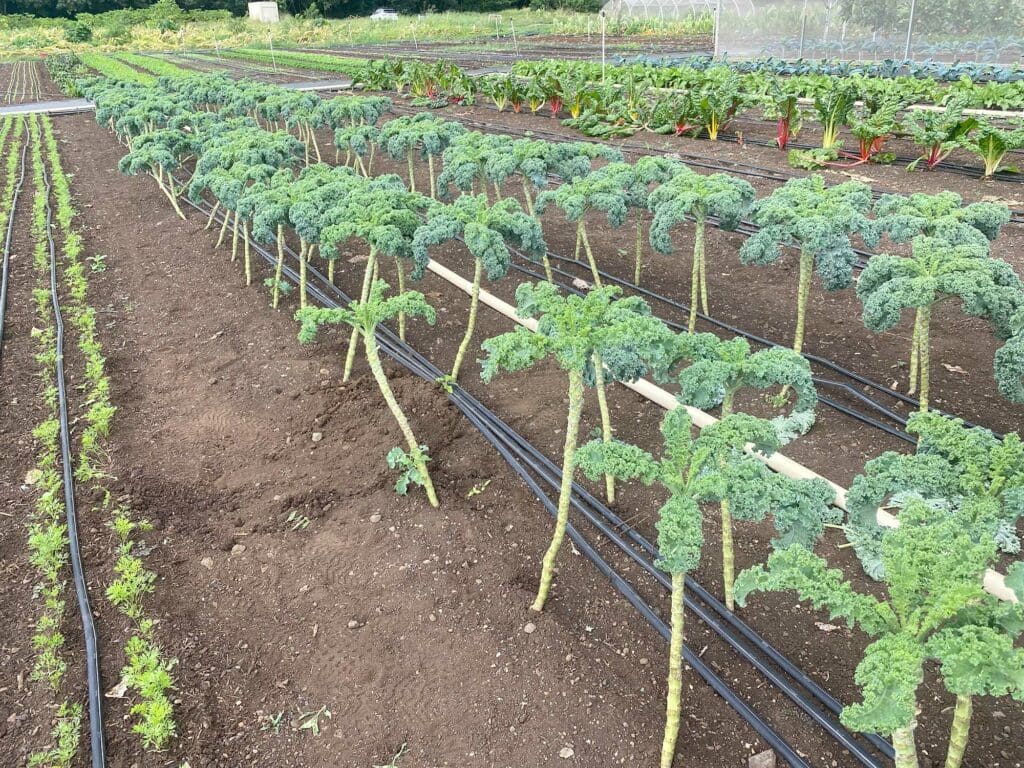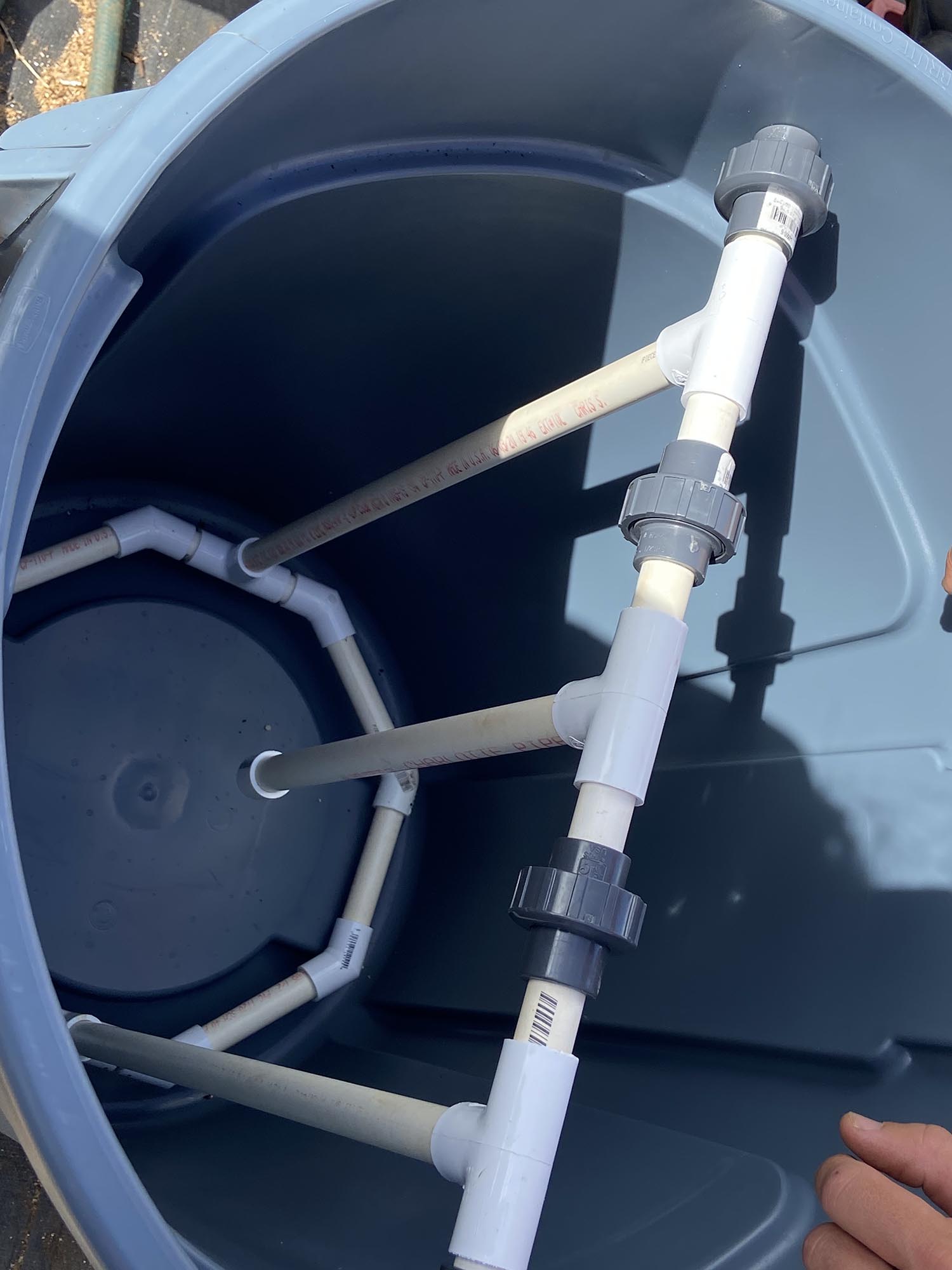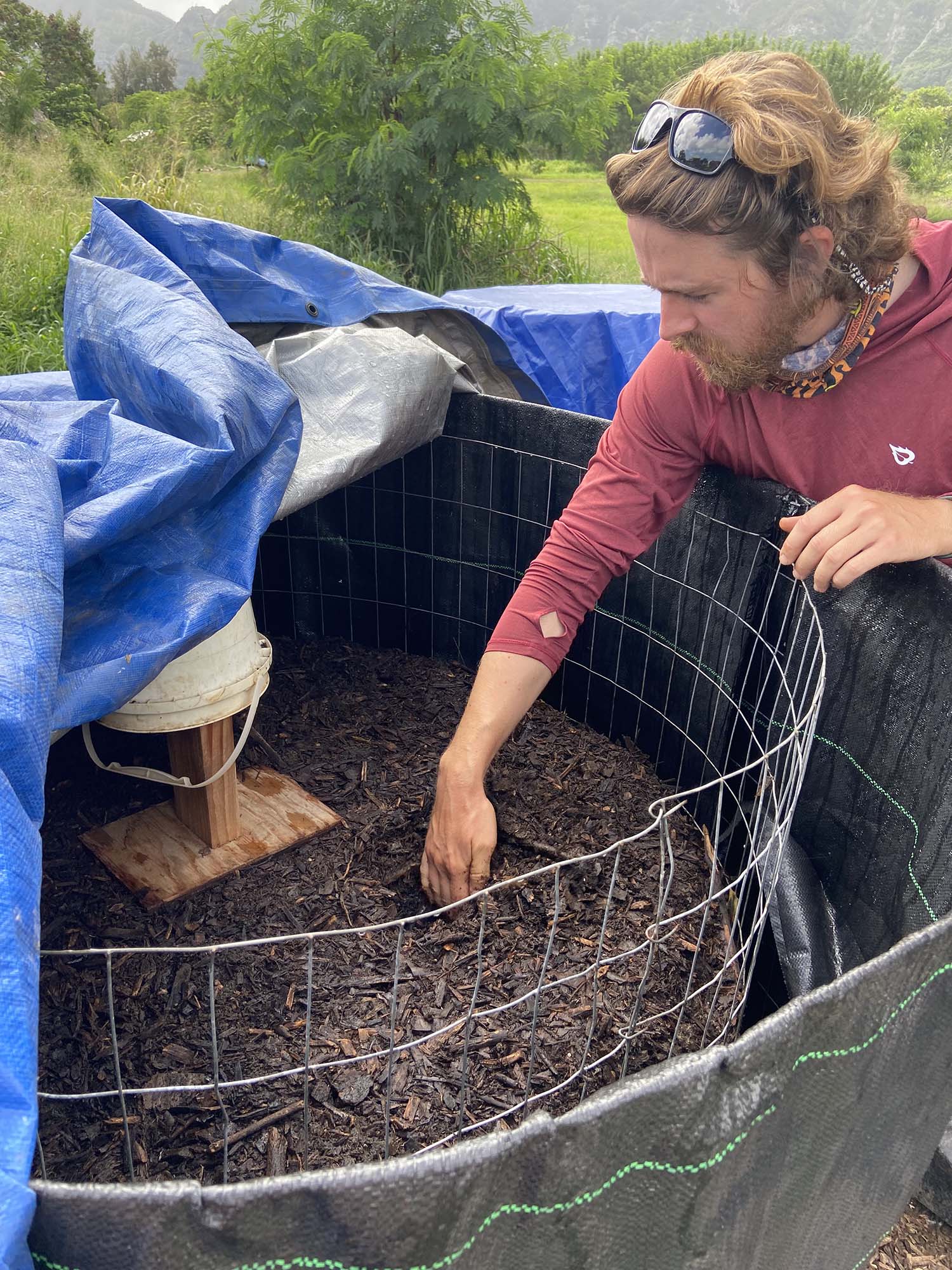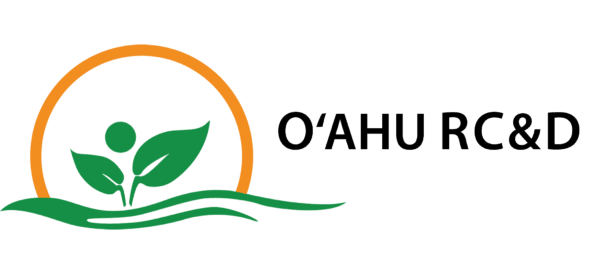Compost Tea Fertigation and Foliar Spray
Soil Health Practice Demonstration
at Ahiki Acres
Operation Background:
Hayley and Matt met in the fall of 2018 as students of Hawaii’s GoFarm beginner farmer training program. By graduation the following year they were starting a farm together. For their first three years they had access to a 1/2 acre plot in Waimanalo as part of GoFarm’s AgIncubator program, and in 2023 they will be transitioning to a new 5.7 acre site nearby. The new property is HDOA land for which they secured a 20 year lease.
Ahiki Acres’ mission is to increase Oahu’s food security by growing healthy products, creating a reliable local food system, and educating future generations, all while practicing responsible stewardship of the ‘aina.
Matt and Hayley grow diversified vegetables using organic methods, selling wholesale to local restaurants and direct to consumers through farmers markets. They sell their own produce as well as items from other small, organic growers nearby, acting as a food hub of sorts.
Ahiki Acres’ soils are Wailua series Mollisols, and the farm sees an average of 42.1 inches of rain a year. Hayley and Matt own and operate the farm with the help of one or two farmhands, and sometimes an apprentice and/or intern.
Hayley and Matt have their production systems fairly well established, with several aspects designed to support soil health. They rotate families of crops to increase biodiversity. They apply 25 yards of compost per bed before planting, as well as 5 lbs of tankage/bonemeal for a slow-release form of nitrogen. The farmers use a BCS tractor to maintain their beds and a flail mower to maintain their walkways. During bed prep, they use a broad fork to aerate the beds and then use a tilther to prepare them for seeding, which only disturbs the top 2” of topsoil. They use a wheel hoe to weed one inch down into the beds. When harvesting, the Ahiki team cuts the crops at the soil level and leaves the roots in the soil. They also try to keep their beds moist to keep the biology alive.
Some challenges that Matt and Hayley face include high pest pressure on the farm, particularly fungal issues which require frequent fungicide applications. Their irrigation costs are high and they are looking for ways to build moisture into the soil in a windy environment. They are also seeking ways to stimulate the biology of the above-ground parts of their crops.

Soil Health Goals:
Overall, Hayley and Matt hope to reduce fungal issues, reduce insect pressure by attracting more beneficials, improve soil moisture content and reduce irrigation costs, stimulate plant root growth, and stimulate biology in the above-ground part of their crops—all though increasing the health of their soil.
Soil Health Practice: Application of Compost Tea and Foliar Spray
By applying compost tea as fertigation and as a foliar spray, Matt and Hayley hope to provide their plants with more soluble nutrients to boost biological activity. Their goal for this particular practice is to increase their yields by improving plant health and decreasing pest pressure.
Applied to the soil, compost tea is thought to boost root and plant growth by providing a high level of nutrients in a soluble form that is more immediately available to plants than traditional compost. Aerated compost tea can also serve as a rich biological amendment, the microbes able to reach the plant roots much faster than from regular compost. In this way it can inoculate plants with beneficial microbes that help to decrease disease by outcompeting pathogens. Applying compost tea as a foliar spray delivers similar benefits, both as a fertilizer and inoculant.
The farmers will also apply a calcium and sulfur-based foliar fertilizer spray made from a combination of gypsum and a product called Hortmix (Brandt’s brand). This was a recommended addition by Pete Bunn and is going to be a part of their regular fertilizer program.
This practice will be trialed on three of Ahiki’s 100-foot kale beds for a period of 6 weeks. Fertigation with compost tea will be applied every two weeks. Compost tea will be applied as foliar spray every other week, and on alternating weeks the calcium foliar spray will be applied. The farmers’ regular practice of preparing beds with compost and tankage will be maintained during the trial.
To brew the compost tea, they will use 10lbs of compost extracted into 25 gallons of water, mixed in a 55 gallon bin and aerated with a pump attached to perforated pvc. They have an existing onsite composting system they will source from.

As they experiment with this new practice, It will be important for Matt and Hayley to become aware of how much nitrogen is being added to the soil through their regular nutrient regime, and how much the new soil health practice will contribute. This will help them wisely integrate the new practice into their existing program and avoid adding excess nitrogen and disturbing their C:N ratio. This will include developing the best rates of application of compost tea fertigation and foliar spray for their crop.
Financially, Hayley and Matt are interested in the cost savings opportunities of reducing labor needed for applying pesticides and the revenue potential of improving plant health and yield. The cost of most of the materials needed for this practice is listed below.
Costing for soil health practice:
- Hortmix – $12/gal
- Hawaiian Earth Products compost – $54/cubic yard
- 55 gallon drum – $50-100
- Air pump – $100
- PVC – $1/foot
- Soil fertility test – $80 (optional)
- Tensiometers – $45 (optional)
- SolVita test – $99 (optional)
- Nitrate test Merck Millipore Test Strips – $90 (optional)

Monitoring and Updates:
There are a number of things Hayley and Matt can do to monitor the success of this new soil health practice. Check back here for updates on the results of their trial.
Monitoring Strategies:
- Documentation of crop yield changes
- Photo documentation and counts of aphids and other pests pressure
- Photo documentation and test sent to UH CTAHR’s Agriculture Diagnostic Service Center of any bacteria or fungal disease present on the plants
- Measure of the sugar levels in the plant’s sap taken from a sample
- Monitoring soil compaction before and after application
- Monitoring soil moisture through tensiometer
- Soil fertility test
- SolVita test
- Nitrate test
Note: This material is based upon work supported by the U.S. Department of Agriculture, under agreement number NR2192510002C002. Any opinions, findings, conclusions, or recommendations expressed in this publication are those of the author(s) and do not necessarily reflect the views of the U.S. Department of Agriculture. In addition, any reference to specific brands or types of products or services does not constitute or imply an endorsement by the U.S. Department of Agriculture for those products or services.
Resources and References:
- Using High Nutrient Solution Fertilizers Derived from Local Organic Inputs
This project highlights the importance of developing locally-sourced solution fertilizers to reduce reliance on imported fertilizers. It was aimed to help farmers develop cost-effective concentrated nutrient solutions from local materials to be used as fertigation. Various trials were conducted using tankage as a liquid fertilizer with promising results, and a recipe for liquid tankage was developed. - Producing High Nitrogen Liquid Fertilizer for Fertigation Purposes
Related to the project above, this extension bulletin outlines a study done to better understand nitrogen release from liquid fertilizer made from tankage, with the goal of developing aqueous fertilizers for Hawaii that increase soil health and make better use of local resources. - Video: Liquid Organic Fertilizer Recipe and Step by Step Instructions
This video by Dr. Amjad Ahmad of CTAHR provides a recipe to produce liquid organic fertilizer, using locally produced tankage and vermicompost, that was developed and tested in field and greenhouse trials. Although not compost tea exactly, this video illustrates a very similar recipe and process for liquid fertilizer using tankage. - Cover Cropping System & Compost Tea Treatment for Management of Nematodes, Whiteflies, and Pollinators
This presentation outlines studies by Dr. Koon-Hui Wang and Dr. Theodore Radovich of CTAHR to explore the links between soil health, compost tea application, and the control of pests through enhancement of predatory/omnivorous nematodes found in soil.

